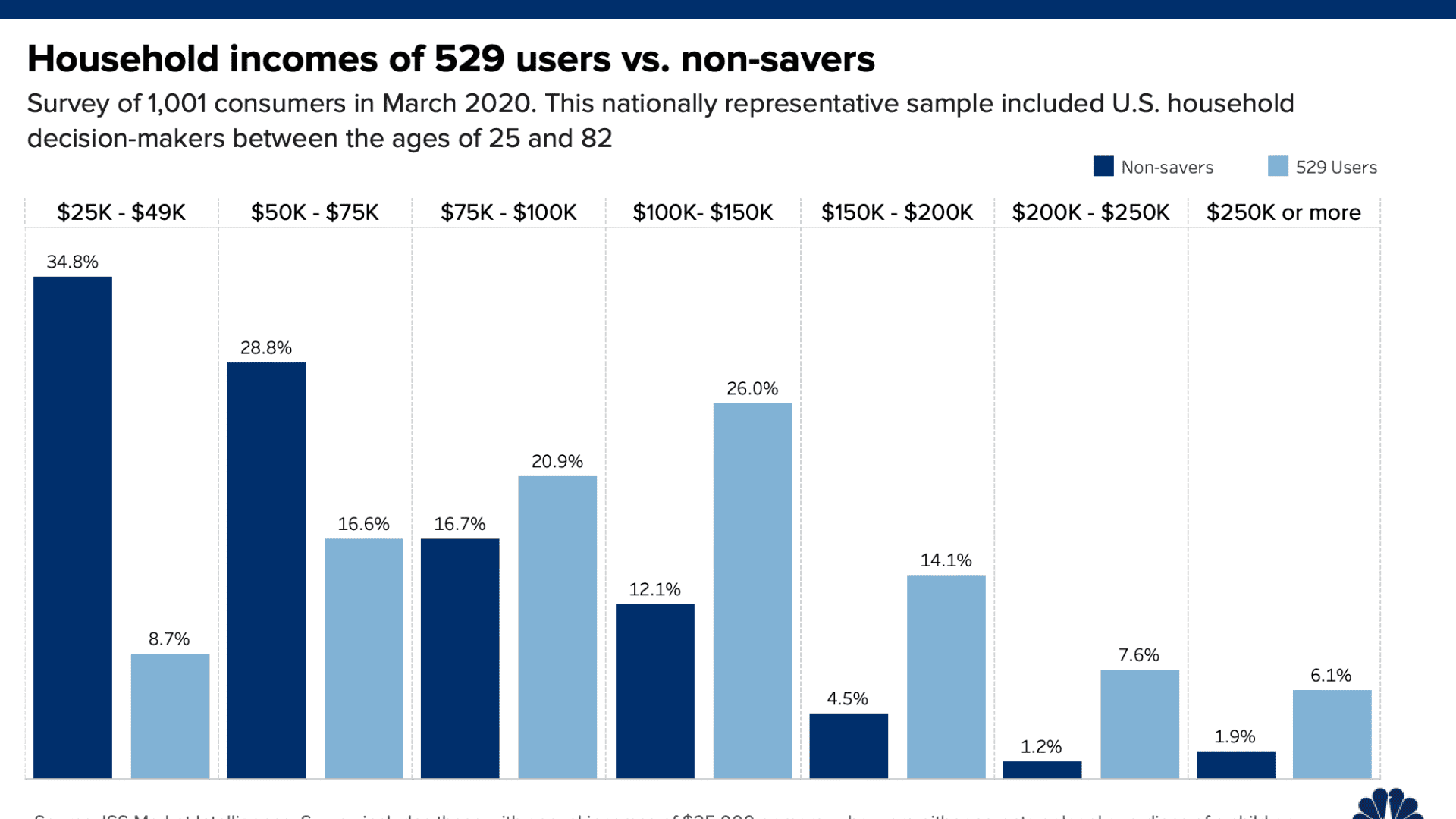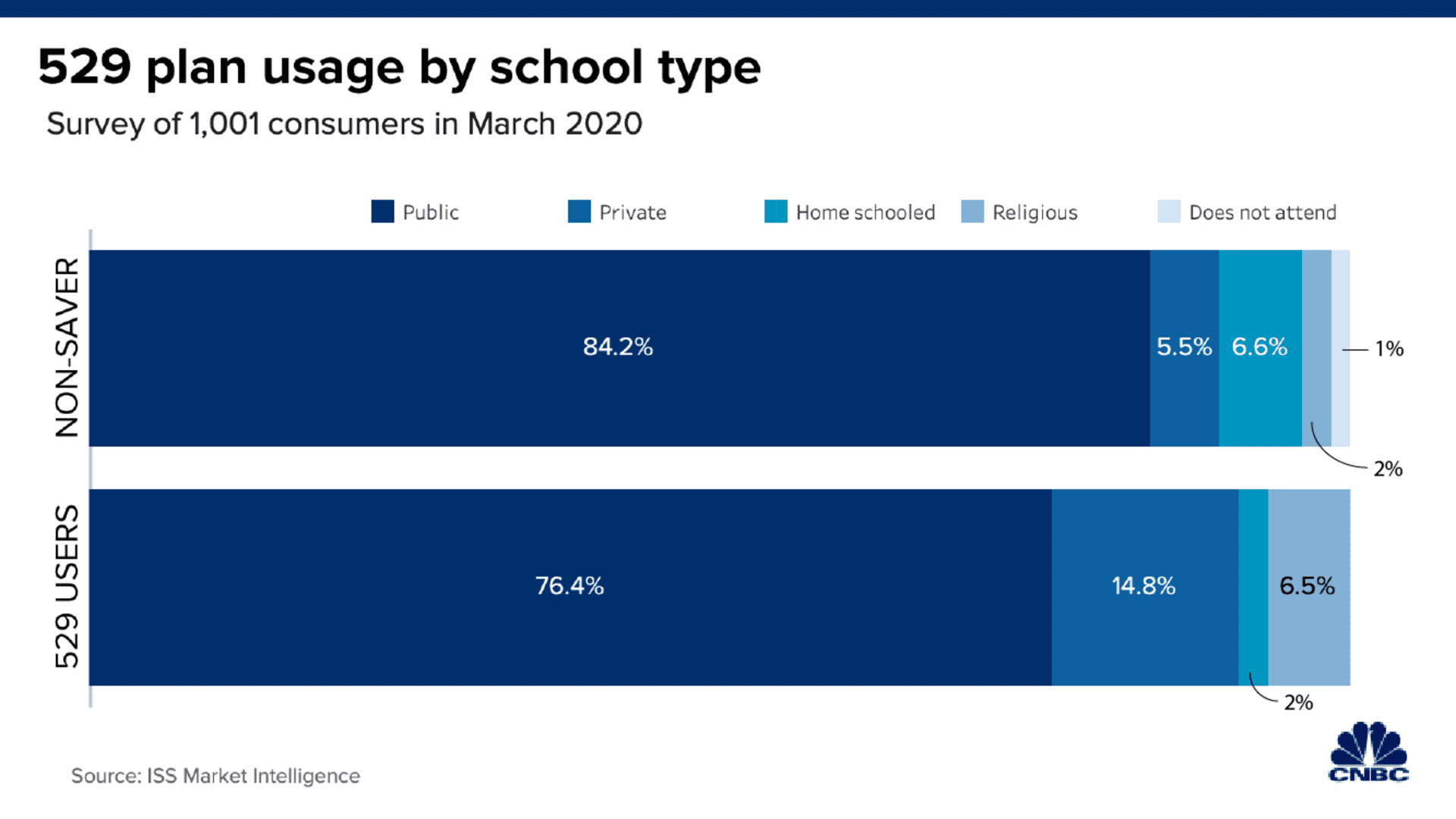
- Senate Majority Leader Mitch McConnell has proposed allowing families to tap their 529 plans to help cover extra educational expenses during the coronavirus crisis.
- Yet only about a third of parents have money sitting in a college savings account.
If Senate Majority Leader Mitch McConnell, R-Ky., has his way, parents will have a lot more flexibility when it comes to covering the extra expenses that have gone hand in hand with distance learning.
McConnell's proposal for pandemic relief would allow parents of K-12 students at public or private schools to use 529 college savings funds to pay for books, online materials and even tutoring to help compensate for the current educational circumstances.
It would also allow parents to use those funds for expenses related to home schooling or suddenly popular "learning pods."
More from Personal Finance:
Post-pandemic, remote learning could be here to stay
Three years ago, the Tax Cuts and Jobs Act expanded the use of 529 plans, which offer tax-advantaged investments to pay for qualified education expenses, to include private-school tuition and books from elementary through high school.
Money Report
Since then, and even through the coronavirus crisis, 529 college savings plans have gained momentum. Total investments in 529s rose to a record $373.5 billion this year.
The average account size is now $25,657, down from a high of $26,054 in 2019, but still roughly double what it was a decade ago, according to the mid-year data collected by the College Savings Plans Network.
As of last year, more than one-third, or 37%, of families used a college savings account like a 529 — up from 21% the year earlier, according to student loan lender Sallie Mae.
There's a reason these accounts have proved popular: Not only can you get a tax deduction or credit for contributions, but earnings grow on a tax-advantaged basis and, when you withdraw the money, it is tax-free if the funds are used for expenses such as tuition, fees, books and room and board.

Of course, there are still many parents who don't have this type of college savings account. Account holders tend to be older and wealthier overall, while younger parents are more likely to miss out, primarily because they are still paying back their own student loans.
In fact, only 23% of parents under 40 save with a 529 plan and, of those parents, just 22% have children between the ages of 5 and 10, or in kindergarten through fifth grade, while 18% have children in middle school and 28% have high schoolers, according to Paul Curley, the director of savings research at ISS Market Intelligence.
Account holders also disproportionately send their children to private school.

And even for these parents, making early withdrawals to cover some costs now could forfeit the benefit from long-term compounding, and college is still significantly more expensive than grade school. (While 529 balances have been growing, so are college costs.)
For the 2020-21 academic year, average tuition and fees reached $10,560 for in-state students at four-year public colleges and $37,650 for students at four-year private institutions, according to the College Board.

The fate of McConnell's plan still depends on the ability of Democratic and Republican party leaders to reach a compromise on Covid relief after months of negotiations.
On Thursday, McConnell said he sees "hopeful signs" for striking a coronavirus stimulus deal before the end of the year.






